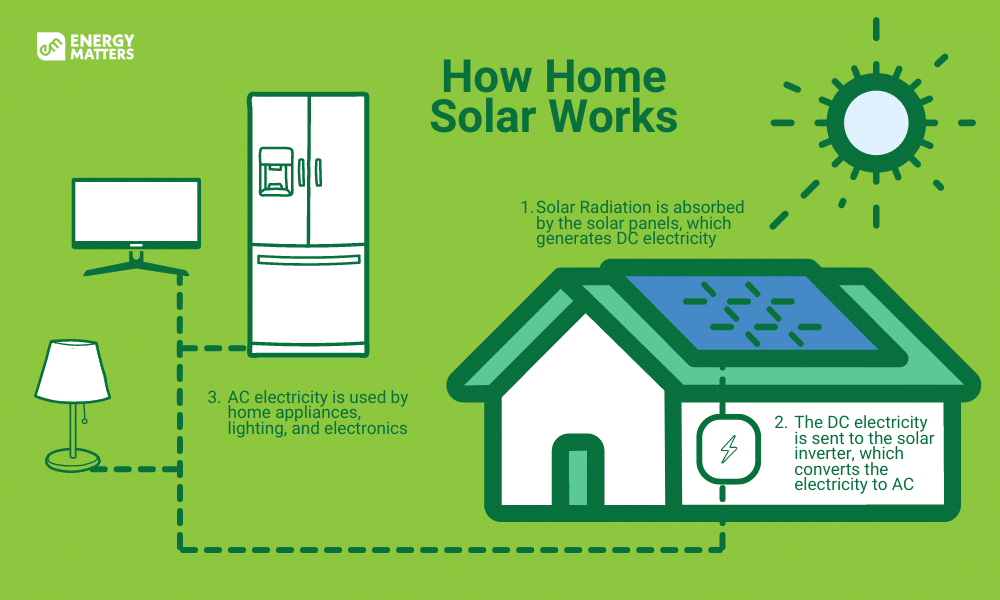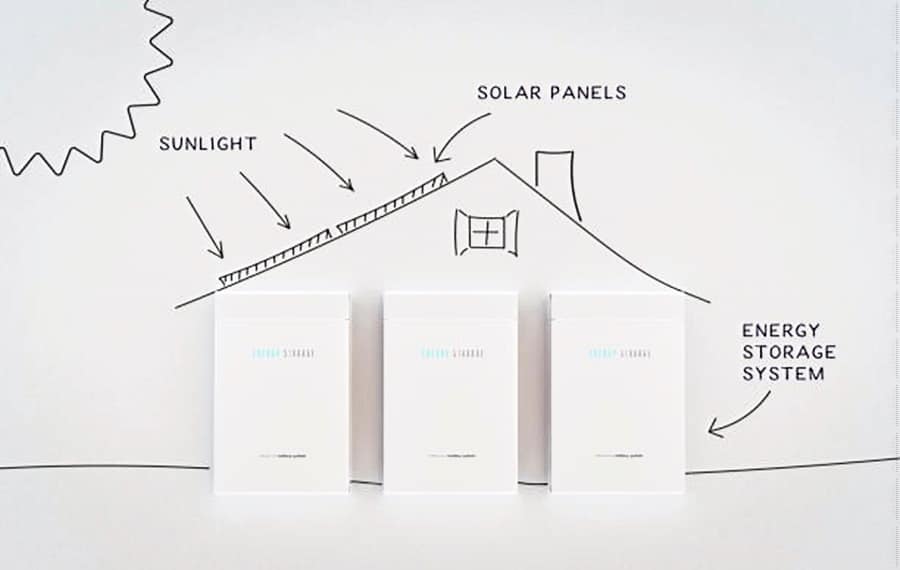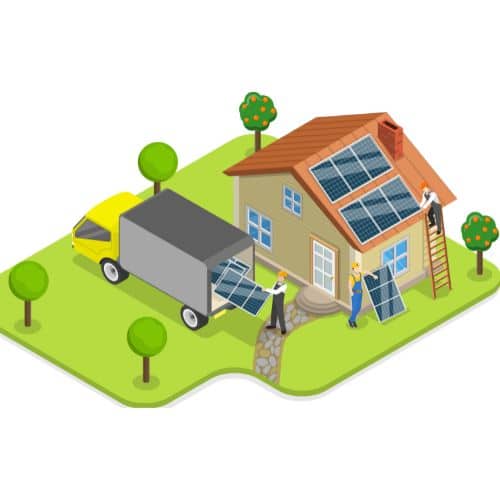How Sun Energy Works: A Step-by-Step Information for Novices
Harnessing the sun’s energy to power your home might seem futuristic, but solar power is a rapidly growing and accessible reality in Australia. With abundant sunshine throughout most of the year, it’s no wonder many Australians are turning to solar to save money on electricity bills and reduce their environmental impact.
This solar power guide will explain the fundamentals of how solar power works, making it easy for you to understand this clean energy source.
Energy Matters has been a leader in the renewable energy industry since 2005 and has helped over 40,000 Australian households in their journey to energy independence. With Energy Matters, you can be sure you’re getting the best possible deal on solar energy. We only work with reputable solar firms with a proven track record of delivering high-quality solar systems.
Capturing the sun’s energy: The solar power of photovoltaic cells
The magic behind solar power lies in photovoltaic (PV) cells. These are the building blocks of solar panels, typically made from silicon, a material that specially interacts with sunlight. The most common method uses photovoltaic (PV) panels that convert sunlight directly into electricity through a process called the photovoltaic effect.
When sunlight hits a PV cell, it’s not simply absorbed as heat. Instead, the energy from the sunlight disrupts the arrangement of electrons within the silicon, creating an electric field.

Imagine a tiny dam within the cell, separating positive and negative charges. Sunlight dislodges electrons, pushing them towards the positive side, generating a flow of electricity—direct current (DC). This is the essence of the photovoltaic effect, the scientific principle behind solar power generation.
From DC to AC: The role of the solar inverter
The electricity generated by a single PV cell is minimal. Multiple PV cells are connected electrically to form a solar panel to power your home. But there’s a catch: most home appliances run on alternating current (AC). This is where the solar inverter comes in.
GLOSSARY
Direct current (DC): DC refers to a constant flow of electricity in one direction, like the steady current from a battery. It contrasts with the back-and-forth flow of alternating current (AC) found in household outlets. | A solar cell: Also known as a photovoltaic (PV) cell, is a remarkable device that captures sunlight and directly converts it into electricity. Made from semiconductor materials like silicon, these cells use the power of light particles to generate electrical current, offering a clean and sustainable energy source. |
Alternating current (AC): AC describes electricity that constantly changes direction, unlike direct current (DC), which flows steadily in one way. This characteristic allows for efficient power transmission and is the type of electricity commonly used in homes and businesses. | Solar inverter: The inverter is the translator between the DC electricity produced by the solar panels and the AC electricity used in your home. It converts the DC into usable AC, ensuring compatibility with your appliances and the electricity grid. |
How solar power works
Let’s see the bigger picture now that we understand how individual PV cells work.
Solar power explained: What is solar power?
Solar power is a clean and renewable energy source that harnesses the sun’s light to generate electricity. Solar power is becoming increasingly popular due to its environmental benefits and decreasing costs, making it a promising choice for a sustainable future.
This solar power guide explains how solar power works and provides a step-by-step understanding of this sustainable energy source.
Step 1: Solar panels capture sunlight
The process of solar power is explained beginning with solar panels. These panels are typically installed on rooftops to capture the maximum sunlight. Each panel is made up of solar cells, which are composed of semiconducting materials like silicon. When sunlight hits these cells, it excites the electrons, creating an electric current.
Step 2: Conversion of sunlight into electricity
The electric current generated by the solar cells is direct current (DC). However, most homes and appliances use alternating current (AC). Therefore, DC electricity is passed through an inverter, which converts it into usable AC electricity.
Step 3: Distribution of electricity
Once the solar energy is converted into AC electricity, it’s distributed throughout the home using the existing electrical grid. This electricity can power lights, appliances, and other electrical devices.
Step 4: Excess power goes back to the grid
One of the great things about solar power systems is that any excess power you generate doesn’t go to waste. Instead, it’s fed back into the main power grid. In many parts of Australia, you can receive credits on your power bill for this excess electricity.
Step 5: Power at night
Solar panels only generate power during the day. However, with the addition of a solar battery storage system, you can store excess power generated during the day for use at night. This ensures a constant power supply, even when the sun isn’t shining.


Feeding the grid: A two-way street
Solar power systems can be connected to the electricity grid in a way that benefits both you and the grid operator. Here’s how it works:
- During the day: When your solar panels generate electricity, and your home’s energy needs are met, the excess AC electricity can be fed back into the grid. This reduces your reliance on the grid and earns you credits on electricity bills in some net metering schemes retailers offer.
- At night or during low sunlight: When there’s insufficient sunlight or during nighttime, your home draws power from the grid to meet its needs.
Exploring solar battery storage: Power when the sun doesn’t shine
While solar panels generate clean energy during the day, they can’t produce electricity at night. This is where solar battery storage comes in. Solar batteries act like a giant power bank, storing excess solar energy generated during the day for use at night or during periods of low sunlight.
A solar battery system allows you to maximise your solar power usage and reduce your reliance on the grid, even after sunset. However, it’s important to note that solar battery systems add cost to your solar power setup.
Use our easy-to-use solar power and battery storage calculator to determine the size of your solar system with storage! Our solar calculator will generate performance information and potential savings.
We can send this information to 3 of our pre-vetted and trusted local installers in your area to receive obligation-free solar quotes.
Exploring the different types of solar power systems
The beauty of solar power is its versatility. Here’s a glimpse into the various solar power systems available in Australia:
1. Grid-connected systems
This is the most common type. The solar panels generate electricity that you can use to power your home. Any excess energy produced is exported back to the grid, earning you credits on your electricity bill (through feed-in tariffs).
2. Stand-alone systems (off-grid)
These systems are ideal for remote locations where connection to the electricity grid is unavailable. They typically include batteries to store excess solar energy during night or cloudy days.
3. Hybrid systems
A hybrid system combines grid connection with battery storage. This offers the security of grid backup while maximising self-reliance on solar power
Choosing the right solar system depends on your specific needs and budget.
The benefits of going solar in Australia
There are numerous advantages to adopting solar power in Australia:
- Reduced electricity bills: Solar power helps you generate your clean electricity, significantly reducing your dependence on the grid and lowering your electricity costs.
- Increased property value: Homes with solar power systems are generally considered more desirable and can command a higher market value.
- Environmental benefits: By choosing solar, you contribute to a cleaner and more sustainable future by reducing greenhouse gas emissions.
- Energy independence: With battery storage, solar allows you to become more self-sufficient regarding your energy needs.
- Government solar incentives: The Australian government offers various rebates and financial incentives to encourage solar power adoption.
To find the most up-to-date information and applicable rebates, check our pages.
A step-by-step guide to installing solar power in your Australian home and business
Now that you understand the core principle of solar power generation let’s explore the steps involved in installing a solar power system for your home:
- Do your research: Australia boasts a thriving solar industry. Research different solar companies and compare quotes. Find reputable companies with proven track records and Clean Energy Council (CEC) certifications.
- Assess your needs: Consider your average energy consumption and your budget. This will help determine the size and type of solar panel system you need.
- Know your roof: The ideal roof for solar panels faces north and has minimal shading throughout the day. A site assessment by your chosen solar company will confirm suitability.
- Financing options: Explore various financing options available in Australia, including government rebates, feed-in tariffs from energy retailers, and solar loans.
- Installation day: The qualified technicians will install the solar panels on your roof, connect them to the inverter, and ensure the entire system functions optimally.
- Power up! Congratulations! Your home is now generating clean solar energy. A handy monitoring app lets you monitor your system’s performance and energy production.
Remember, a well-designed and installed solar power system can significantly reduce your electricity bills and your carbon footprint!
Conclusion: Embracing a brighter future with solar power
Understanding how solar power works is the first step towards embracing this renewable energy source. Hopefully, this solar power guide has demystified the process and shown how accessible and beneficial solar power can be, especially for Australians. As we continue to seek sustainable and environmentally friendly energy solutions, solar power stands out as a viable and promising option.

Why choose Energy Matters?
- We’ve been in the solar industry since 2005 and have helped over 40,000 Australian households journey to energy independence.
- We’ve pre-qualified and vetted our solar installers, who are accredited for their track record of delivering Australia’s best business and household solar systems.
- We’ll match you with installers who are local to you so you can get a quote that’s tailored to your needs.
Benefits of going solar with Energy Matters

Get up to 3 FREE quotes
We’ll connect you with 3 different solar installers so you can compare prices and services.

Work with trusted installers
We only work with solar installers who have been pre-qualified and vetted for their track record of delivering quality solar systems.

Get peace of mind
We’ll support you from the initial consultation to the final installation. Our team will provide you with the information you need to go solar!
Questions? Contact our team of friendly experts for free, no-obligation advice on the best solar panels, best solar batteries and full systems for your circumstances. You can also generate a quick solar quote or view our current system specials.
Ready to go solar? Get an instant assessment
To find out how much a solar system with storage or even an EV charger will cost, try our easy-to-use solar power and battery storage calculator! It will generate performance data and possible cost savings.
We can forward your information to 3 trusted local installers in your area to obtain free, no-obligation solar quotes.
Find out how much you can expect to pay for solar
The form can be filled in the actual website url.
Ready to find out more? Get FREE quotes for solar, batteries + more
The form can be filled in the actual website url.
*Prices quoted are to be used as a guide only and do not factor in state and other rebates and incentives. Includes STC discount.
Our Energy Matters CEO, Roshan Ramnarain, will feature stunning homes installed with the latest solar technology every Saturday at 5:00 p.m. on Open Homes Australia on the 9Life channel. Be sure to watch this show; you won’t want to miss it!

The post How Solar Power Works: A Step-by-Step Guide for Beginners appeared first on Energy Matters.



No Comments